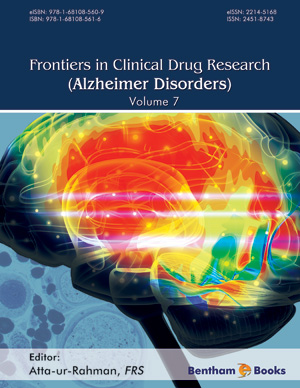Abstract
Physiopathological events associated with the development and progression of Alzheimer's disease (AD) are complex and require new therapeutical approaches. Consequently, N-((5-(3-(1-benzylpiperidin-4-yl) propoxy)-1- methyl-1H-indol-2-yl) methyl)-N-methylprop-2-yn-1-amine (ASS234), synthesized as a new multitargetdirected molecule, has focused a great interest in this field. In vitro, it is able to cross the blood-brain barrier and has less toxicity than donepezil. It acts simultaneously as a reversible inhibitor of both human acetyl and butyrylcholinesterase, and as an irreversible inhibitor of human monoamine oxidase A and B. It inhibits both Αß1-42 and Αß1-40 self-aggregation and possesses antioxidant and neuroprotective properties. Recently, it was demonstrated that ASS234 is able to induce the wingless-type MMTV integration site family (Wnt) signaling pathway, which is involved in neuroprotective activities related to AD and it also promotes the induction of several key antioxidant genes that counteract oxidative stress. In vivo experiments, ASS234 exhibited a reduction of amyloid plaque burden and gliosis in the cortex and hippocampus and significantly decreased scopolamine-induced learning deficits in C57BL/6J mice. Herein, we summarize the neuroprotective effects of ASS234 in counteracting several steps in the pathological processes of AD.
Keywords: AChE, Alzheimer disease, ASS234, BuChE, Gene expression, MAOA/ B, Neuroprotection, Oxidative stress, Wnt signaling pathway.






















